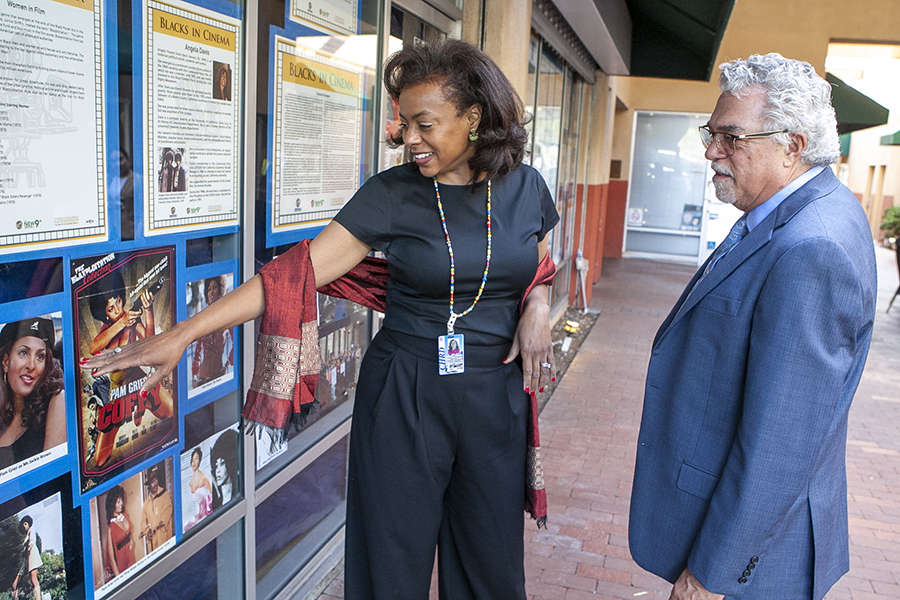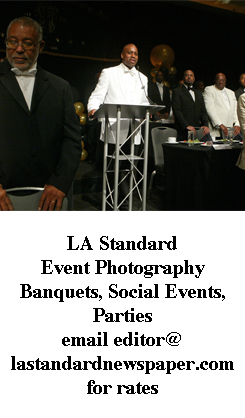Blacks in Cinema covers over a century of Black film.
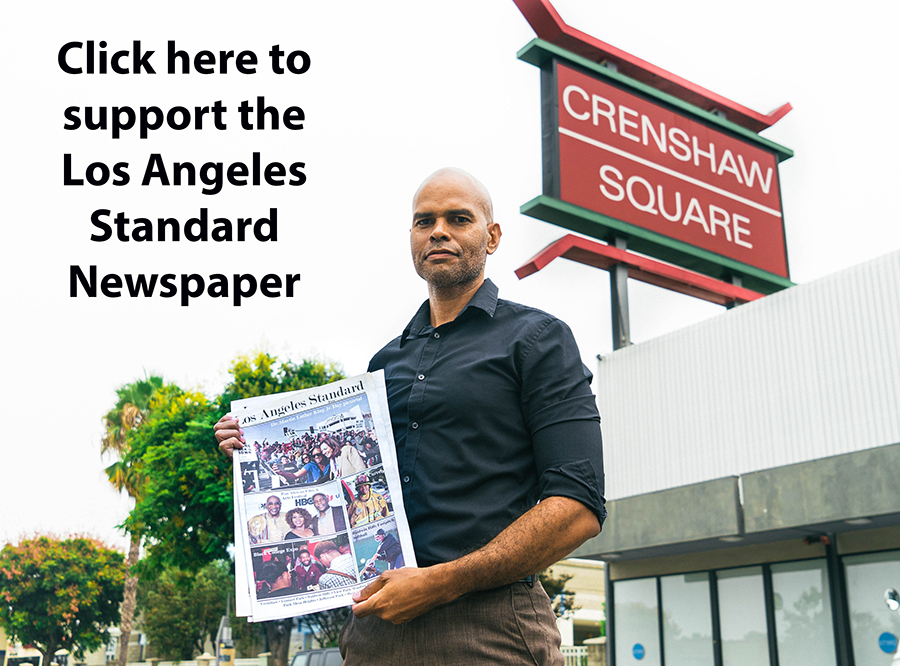
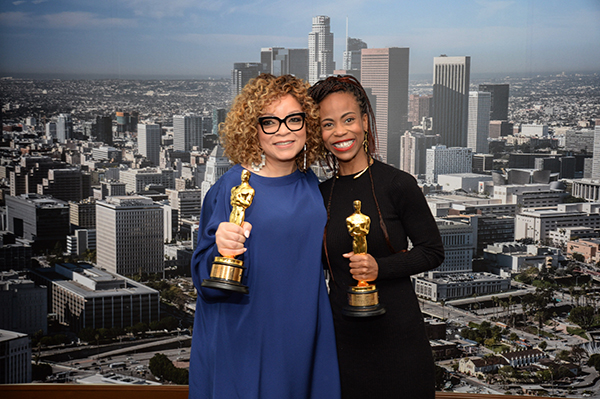
An exhibit chronicling the legacy of Black films on the big and small screen is on display in Leimert Park Village. Blacks in Cinema features over 100 photographs, posters, newspaper articles and documents recognizing the contributions of filmmakers, actors, and stunt men and women and pays tribute to the Pan African Film Festival. The outdoor self-guided walking exhibit is free and currently on display at the corner of Degnan Avenue and 43rd Street and in the courtyard adjacent to Community Build, Inc.
Blacks in Cinema covers over a century of Black film. Highlights of the exhibit include recognition of Oscar Micheaux, considered the first major African-American feature filmmaker in 1919; pioneering black films, “Car Wash” (1976) and “Black Panther” (2018); Pan African Film Festival and co-founders Ja’ Net Bu Bois (“Good Times”), Danny Glover (“The Color Purple,” “Lethal Weapon”) and Ayuko Babu (Executive Director) ; Academy Award winners Ruth Carter (best costume design) and Hannah Beachler (best production design) for their work in Black Panther; 1970s television and film actors including Marla Gibbs (“227,” “The Jeffersons”), Glynn Turman (“Cooley High”) Ted Lange (“Love Boat,” “That’s My Mama”), Rudolph Frank Moore (“Dolemite”), Dwan Smith-Fortier (“Sparkle,” “ House Party IV,” “General Hospital”) and many more.
“What’s interesting is in 2019, the number one movie, Black Panther, was almost a mirror image of the films from the 70s,” said Albert Lord, vice president of Government Relations and Arts Programs for the nonprofit Community Build Inc., who is responsible for the exhibit. “The 70s recognized Black power, the Vietnam War, the hippy generation, the fight for gender equality and of course, the [Black] Panther Party, all the general themes of Black Panther. I thought it would be interesting to highlight both in the exhibit.”
A major part of the period covered in Blacks in Cinema is the “Blaxploitation” films of the 1970s. According to the Separate Cinema Archive, a key resource for the exhibit, the late 1960s and early 1970s ushered in a new trend of Black action films. Violent and racially-motivated films such as “Shaft” and “Superfly” emphasized rebellion against authority. The films created a Black hero on screen that, in the wake of the Civil Rights Movement, African-American audiences needed and welcomed. These films featured former professional athletes like Fred Williamson, Carl Weathers and Bernie Casey and launched the career of actress Pam Grier (“Coffy,” “Foxy Brown”) who became known as the queen of the Black action genre.
The exhibit also spotlights the rise of Black stunt men and woman. Prior to the 1967 establishment of the Black Stuntmen and Women’s Association, stunts for Black actors were done by White men “painted down” to a darker complexion. Change happened when the organization filed lawsuits against several major movie studios and Black actors refused to have White stunt doubles. Some of the early television shows and films that featured Black stuntmen include “Mission Impossible,” “The Mod Squad,” “Dirty Harry,” “I Spy” and “Across 110th Street.”
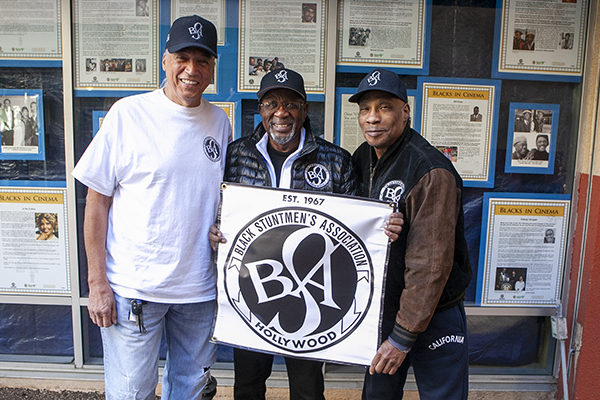
“The role Blacks played in American cinema is a very important part of our history,” said Robert Sausedo, president of Community Build Inc. “I remember watching movies with my mom and her sisters. Seeing Blacks on screen was powerful and gave me an image that has stayed with me. This exhibit is a reminder of where we came from and shows the foundation of how Blacks are portrayed in films today.”
Community Build Inc. is located at 4305 Degnan Avenue.. For more information on Blacks in Cinema visit communitybuildinc.org or call (323) 290-6560.


